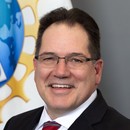Before the COVID-19 pandemic, the National Science Foundation already had a high percentage of teleworkers; in 2019, 94 percent of the agency’s 1,500 employees worked remotely, with nearly one-quarter of those taking three or more days per week.
But even federal agencies already familiar with telework experienced some technological turmoil in spring 2020 and took lessons from that experience. Three top NSF officials — CIO Terry Carpenter; Dorothy Aronson, chief data officer and chief AI officer, who was CIO in 2020; and William Malyszka, director of the NSF division of human resource management — discussed the changes in their agency’s digital experience with FedTech.
FEDTECH: What challenges does NSF face as it establishes a more modern and agile foundation to support the workforce?
CARPENTER: As NSF increases its onsite presence with the return-to-office transition, with requirements for both shared and collaboration spaces, we are introducing hardware that can improve the hybrid work experience while also improving service resilience and redundancy so that the new tools supporting hybrid work meet their expanding requirements.
We’re also investing time and resources to improve end-user education, helping staff and visitors choose the right tools for their tasks, and ensuring good security hygiene while promoting a culture that encourages our workforce to learn new ways to operate in the hybrid environment.
Click the banner below to begin modernizing your agency's digital experience.
FEDTECH: What’s different about your IT strategies today, compared with a couple of years ago?
CARPENTER: Reliability needs are higher, as are service levels for commodity services. And end-to-end user experience is even more critical now. Some users also required additional assistance due to issues with home internet services and Wi-Fi network configurations. Perhaps more important, the mesh of independent services is now more complex, which brings new security challenges.
FEDTECH: How did NSF adapt its IT platforms for a remote workforce?
MALYSZKA: By early 2020, when the COVID pandemic expanded into the Washington, D.C., region, NSF was already adapted to routine telework and had established many best practices. Because so many NSF experts and advisers have teaching and research responsibilities at home institutions far from Washington, hybrid and remote participation have long been an option for some meeting participants.
READ MORE: Here’s how the NSF responded to the COVID-19 emergency in 2020.
Additionally, many NSF staff use periodic telework for focused work, an option that became more widely available when NSF relocated to Alexandria, Va., from Arlington, Va., in 2017. At that time, the agency transitioned staff to seamless mobile computers, which are laptops configured for remote work.
Before the pandemic, 58 percent of NSF staff were already teleworking at least one day a week. In fact, only 6 percent of staff did not have a situational telework agreement in place. When COVID hit, the NSF workforce was prepared and practiced at working from home.
ARONSON: At the height of the pandemic, NSF increased capacity for its public internet, VPN and virtual desktop software to reduce the risk of performance issues, and the agency established a new cloud-based virtual whiteboarding tool to facilitate brainstorming, agile project planning and related activities. That tool is still used today.
In the early days of the pandemic, the agency also improved the reliability and scalability of several IT platforms by migrating them to the cloud. For example, we transitioned to two new cloud-based web conferencing services to improve redundancy and the user experience, and we retired on-premises solutions. We also connected to 16 other federal agencies through the Microsoft Teams platform and completed the migration of user-created files to Microsoft OneDrive, which greatly improved secure file-sharing.
Of critical importance to our mission as a funder of federal research, NSF completed its migration from physical to electronic signatures during the pandemic. That effort extended to both contracts and HR processes, which transitioned to cloud-based services that improved the user experience.
MALYSZKA: As a collaborative community with a rich culture of cooperation, sharing and connection, finding ways to increase our in-person time together in a meaningful way while maintaining workplace flexibility is critical to our mission success. There is no singular or simple path to creating an optimal hybrid work environment. In fact, hybrid environments should be continuously assessed.
FEDTECH: What lessons would you offer other federal IT leaders who want to establish a more agile and secure IT environment for a hybrid workforce?
CARPENTER: First, federal IT leaders should rationalize IT services to the bare minimum necessary for business continuity requirements. Second, redundancy is good in a crisis, but too many choices impact the user experience. And last, security complexity increases with more services.
ARONSON: When establishing a hybrid work environment, data management and IT security should be in the conversation from the beginning. IT leaders should be asking, where will my data be stored? How will I access it in a crisis? How is it protected? What if something happens to the service provider? How will we responsibly leverage new technology, such as AI, to drive value from data that is stored in multiple places?
IT leaders should also develop educational campaigns with user input, so that resource users and those developing new software tools understand security concepts and how security relates to what they are doing.
CARPENTER: Federal IT leaders should also promote a culture of curiosity. No system will be perfect — we need users to be curious and to offer their input as part of a continuous conversation. Even the best of intentions can be misinterpreted. Fostering innovation and empowering local innovators will help federal IT leaders identify solutions for use by the hybrid workforce, as will earlier identification of emerging technologies, process improvement opportunities, new data needs and underutilized tools.












